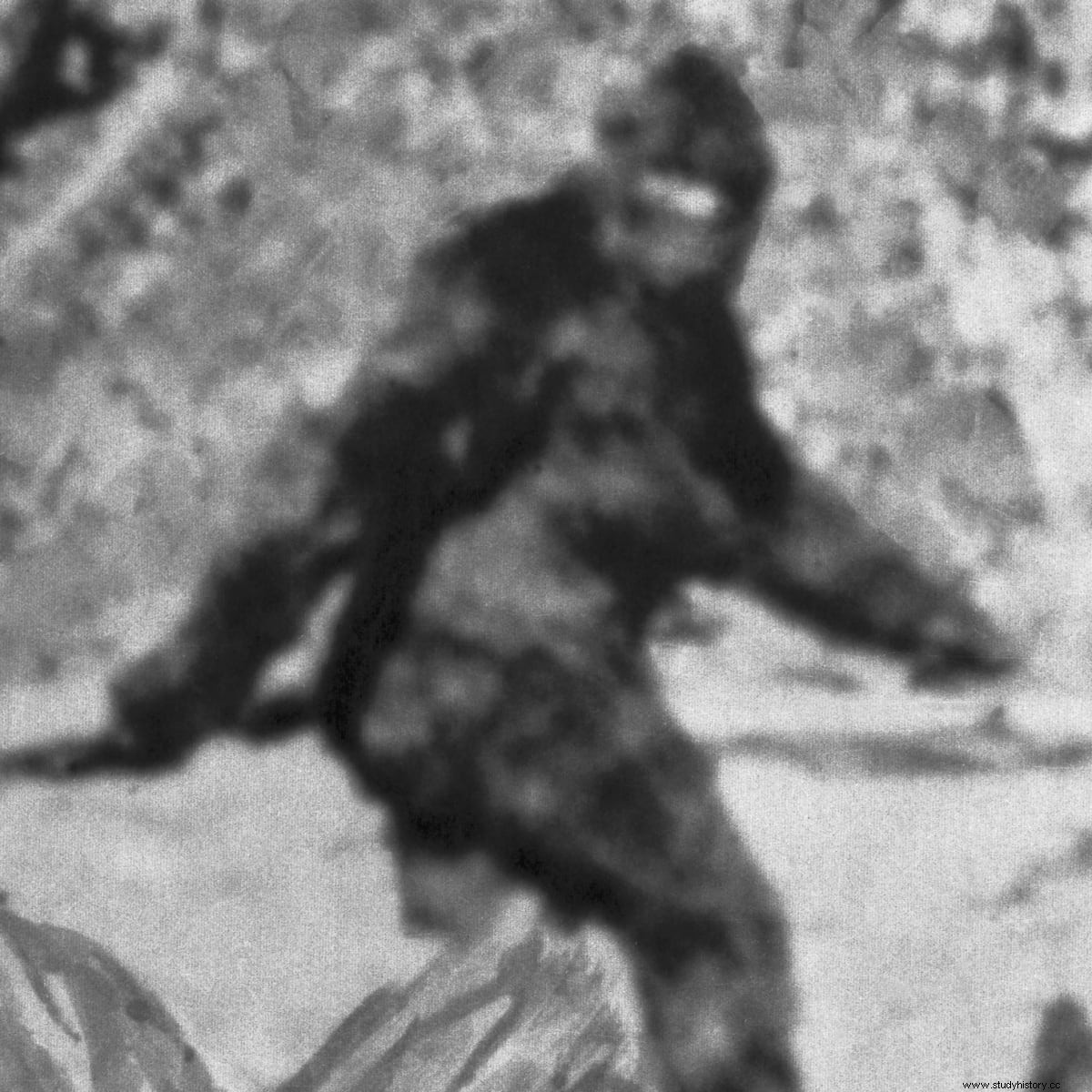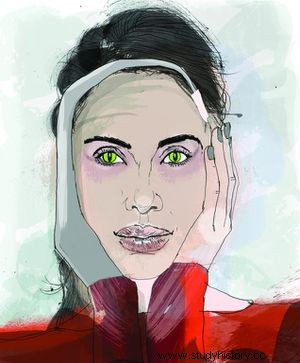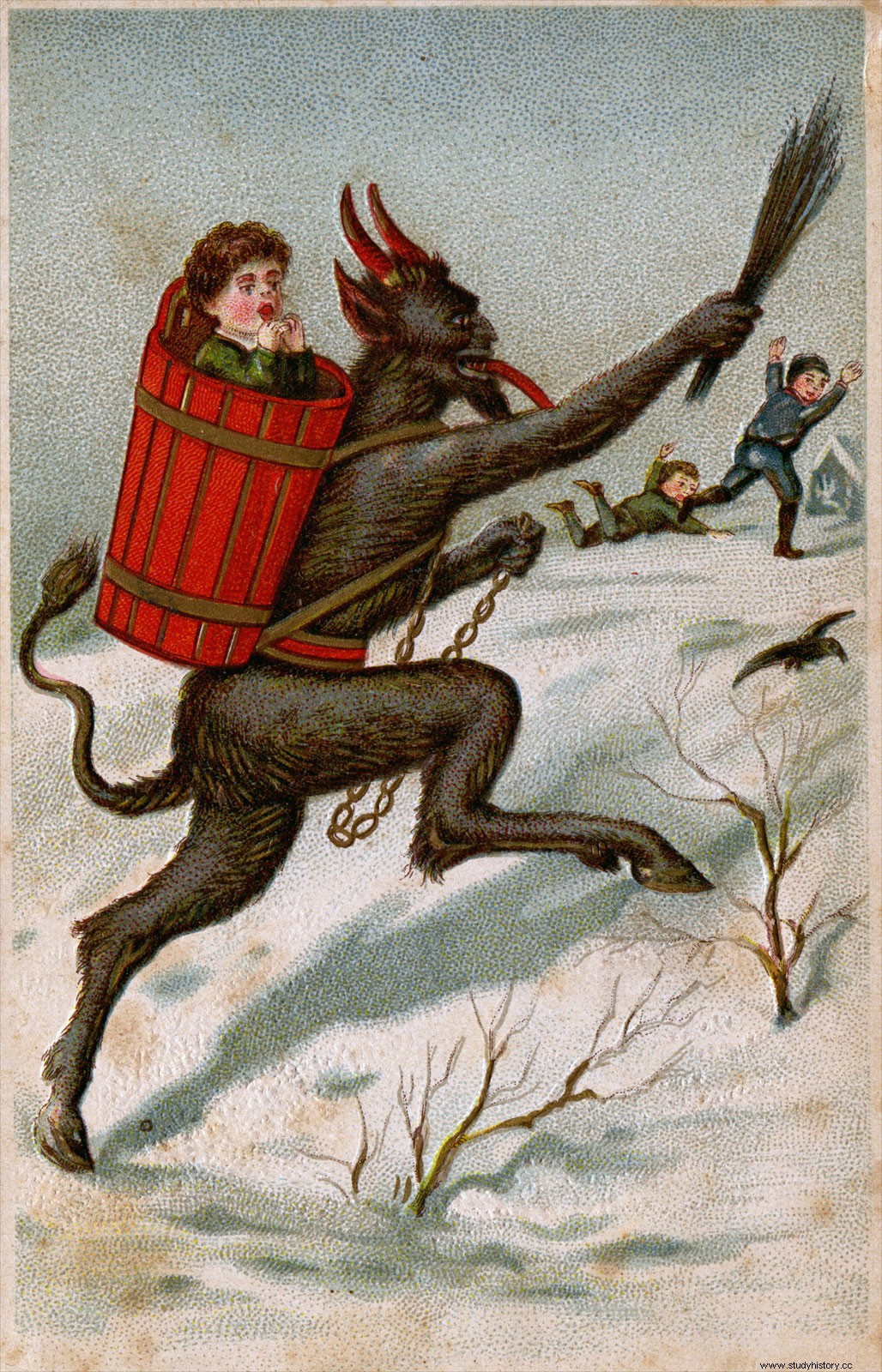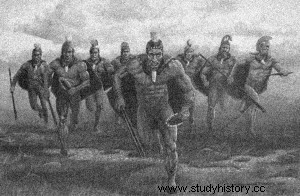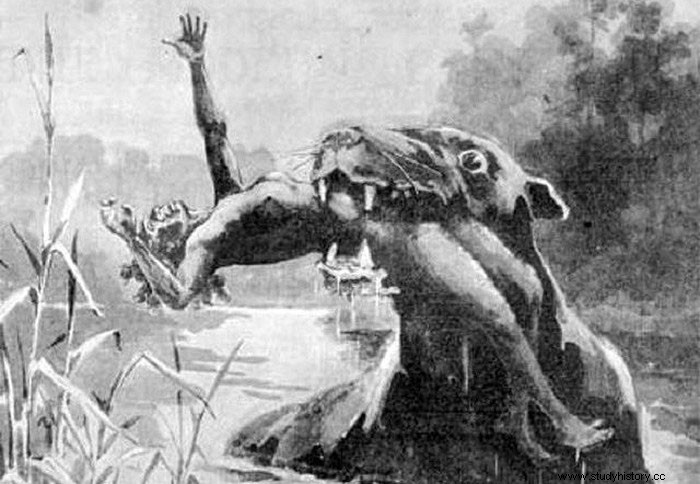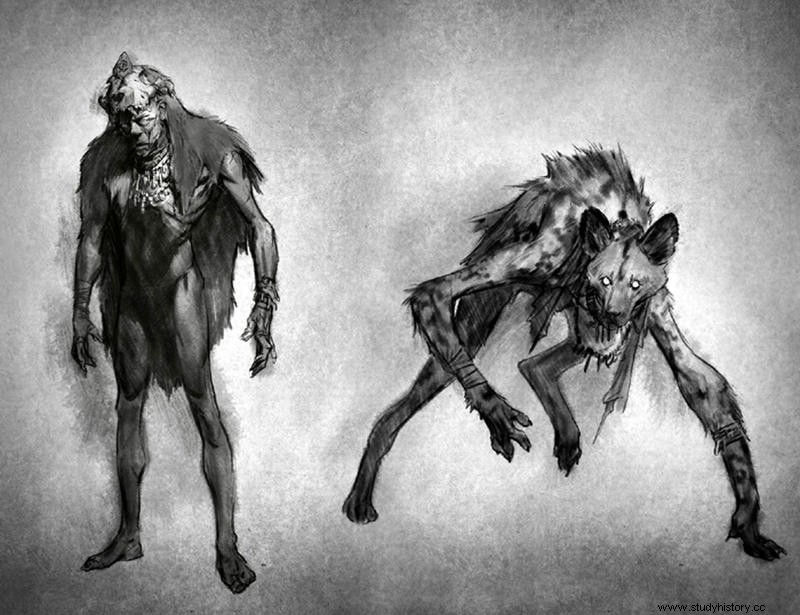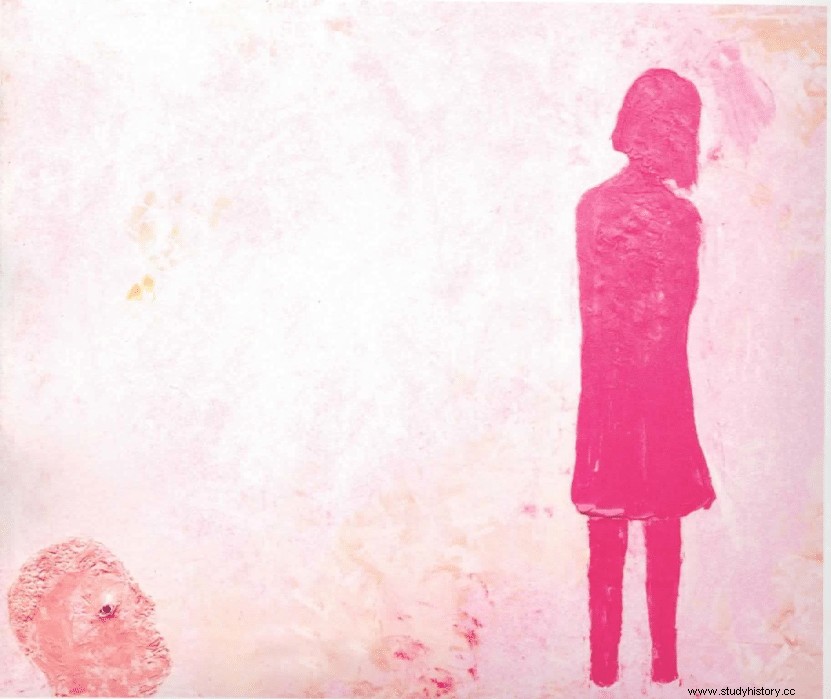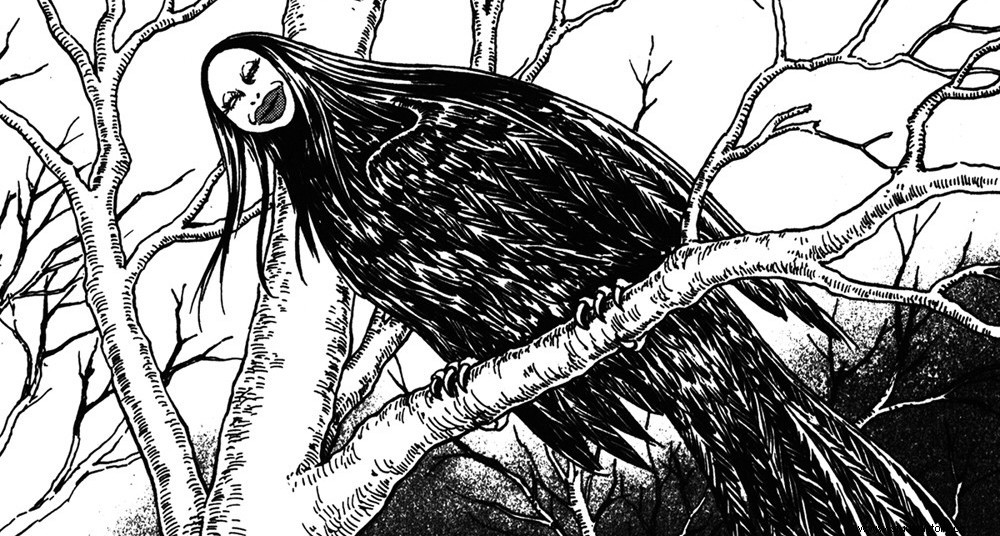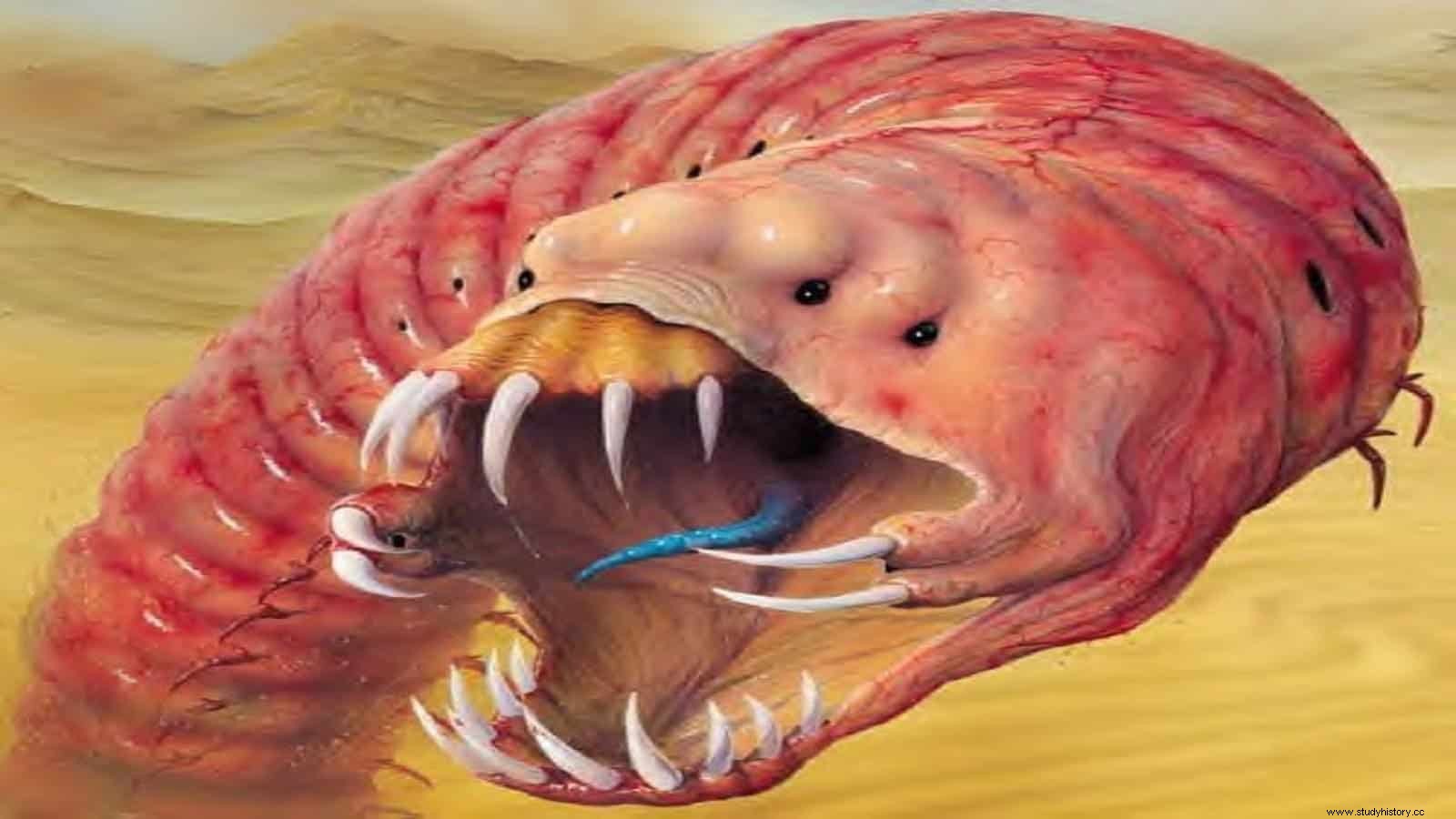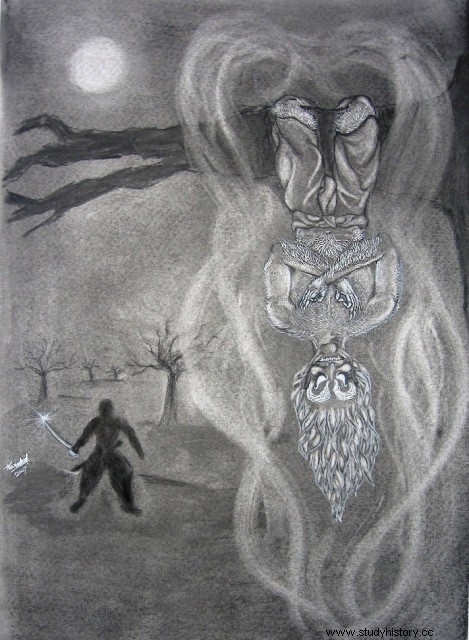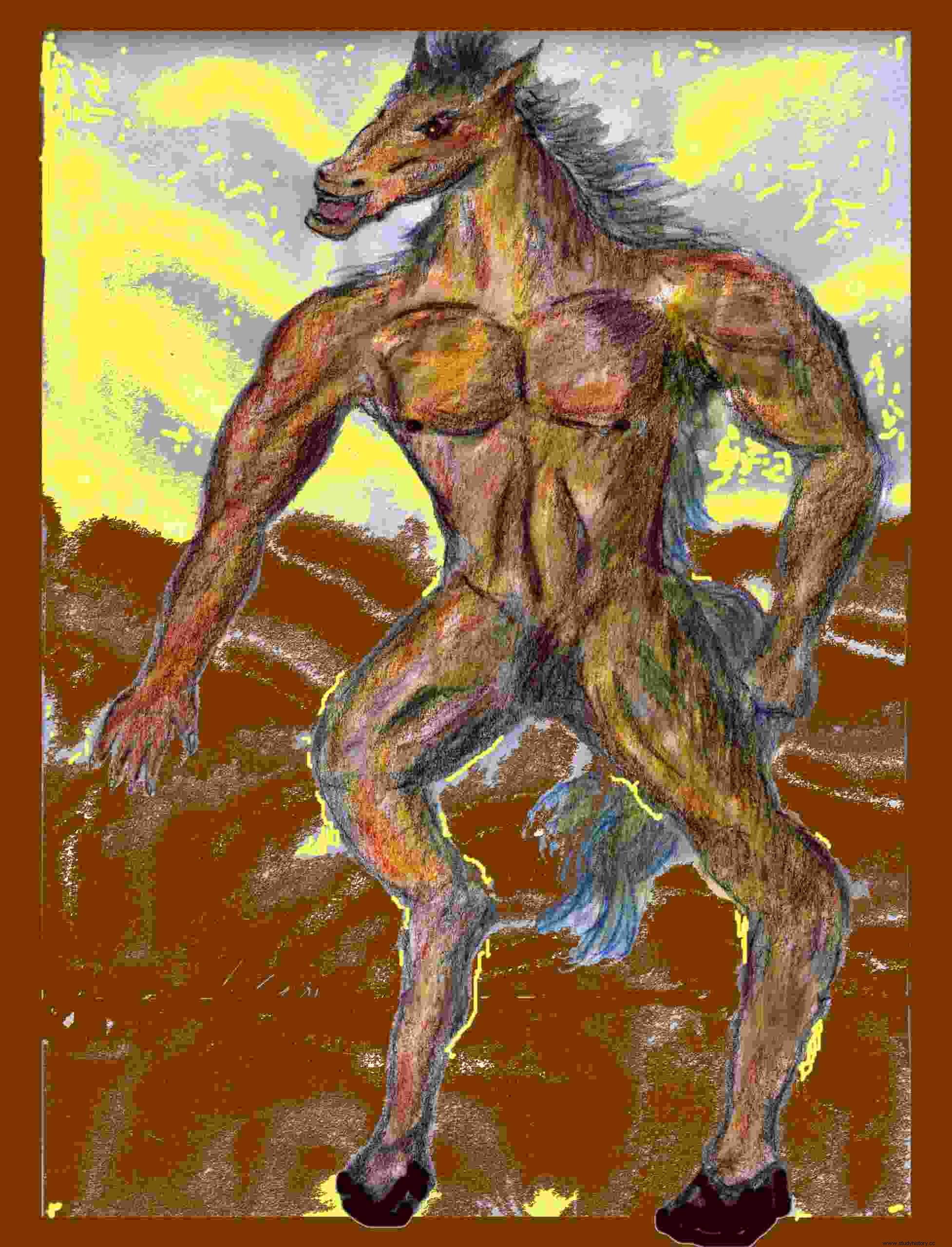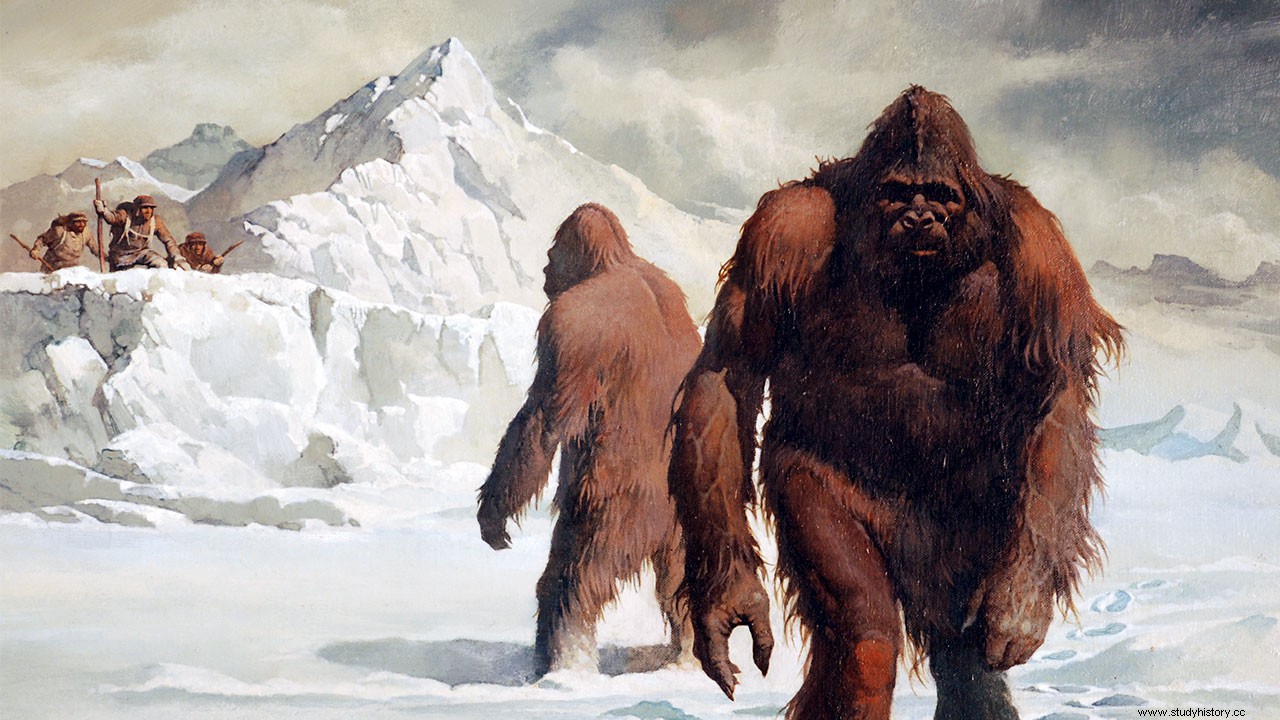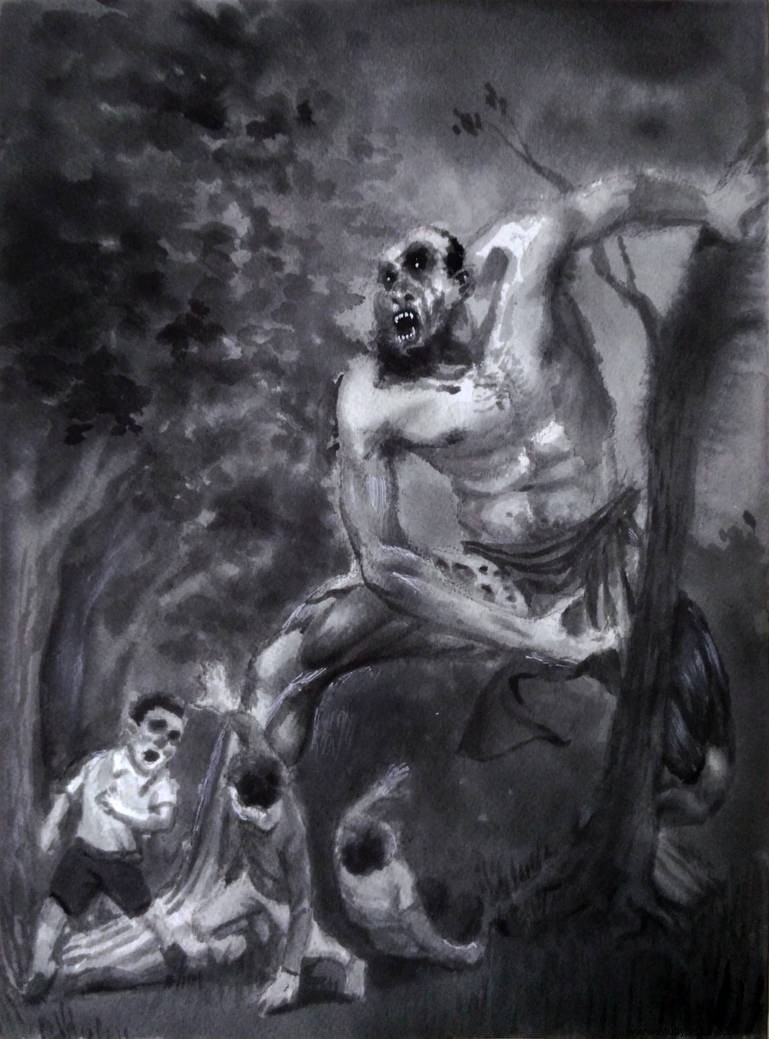Urban legends are often an important part of folklore in a given culture. Almost everyone in the world can remember an urban legend they have heard, whether it is from their own culture or another. Urban legends usually have a kind of supernatural, eerie or supernatural element in them, and they tend to stay with us for a long time because of the strong emotions they provoke. Here we will explore the origins of a number of urban legends from around the world.
Bigfoot
Bigfoot is a creature named after the large footprints it often leaves behind. Commonly associated with the forests and mountains of North America, Bigfoot is commonly described as being taller than the average human, covered in dark hair. People who have seen this creature observe that it looks a bit like a human or a monkey.
Origin
The legend of Bigfoot formally began when a group of lumberjacks in Northern California wrote a letter to a newspaper in 1958. This letter described a number of large footprints around the place where the lumberjacks worked. While the newspaper first published this letter as a joke, it aroused readers' curiosity. Consequently, people continued to talk about Bigfoot, and lumberjacks often blamed timber accidents on the creature. Due to the growing hype surrounding Bigfoot, a television program offered $ 1,000 to any person who could prove that the creature actually existed. While the TV show failed to provide any solid evidence, Bigfoot's popularity continued to grow. This creature inspired a number of novels and comics, documentaries starting in the 1970s and continuing today.
Long before the letter written by lumberjacks in 1958, Bigfoot was informally part of Native American folklore. Some Native American petroglyphs are said to depict a large, hairy man, who many speculate is a representation of Bigfoot. When these petroglyphs are combined with stories shared by Native American tribes in North America, we can assume that the legend of Bigfoot began decades or even centuries before the letter from 1958.
Umm Al Duwais
Umm Al Duwais from the United Arab Emirates is described as a very beautiful woman. It is said that she has long black hair, wears golden clothes and jewelry, and has a strong scent of perfume. This woman is a seductive jinn who tries to lure men towards it with her beauty and voice. However, when a man is lured in, Umm Al Duwais reveals its true nature. Umm Al Duwais is in fact a monster with donkey legs, cat-like eyes and hands shaped like a sickle. When men are close enough to see the reality of Umm Al Duwais, it is too late and they are eaten.
Origin
Legend has it that Umm Al Duwais was born to a mother who was desperate for a girl. In her desperation, she drank a drink that a witch gave her and nine months later gave birth to a girl. Although the family was happy about the birth of a girl, they were on guard when the baby was born with a full set of teeth. Shortly after the baby was born, the family noticed that the food continued to disappear during the night, no matter how much they filled up. As their girl grew, they discovered that she ate everything in the house every night. Soon enough, the child's appetite became too great, and she stopped devouring the whole family. This child grew to become a woman, and since then it wanders the streets at night to devour men.
Krampus
Krampus is actually the antithesis of Santa Claus. Originating in Germany and Austria, legend has it that Krampus is a large figure covered in dark hair. He has horns on top of his head, hooves for his feet, fangs and a long, pointed tongue. Krampus, a terrifying figure, punishes children for misbehaving and sometimes even carries them to hell in a sack.
Origin
The legend of Krampus has its origins in pagan tradition, especially the celebration of the winter solstice. He was later adopted into the Christian tradition and was said to help St. Nicholas by frightening children who misbehaved. Legend has it that St. Nicholas and Krampus visit children on XNUMX. December, where children who behave will receive fruit and gifts from St. Nick. On the other hand, Krampus would hit misunderstood children with a stick. More recently, Krampus has become popular in popular culture films and stories. In Germany, Krampus is still very much celebrated with Krampuslauf, an event where people dress up as creatures and walk or run in the streets.
Night marches
The Night Marchers of Hawaii are the mortal spirits of ancient warriors. These ghosts, usually on their way to or from battle, usually move in time with war drums. The blowing of a conch shell can be heard along with the drums, as well as deep singing from the warriors. The warriors themselves are usually dressed in helmets and cloaks, have raised torches and carry weapons such as spears and clubs. A strong, deadly smell hangs there no matter where they have marched.
Legend has it that Night Marchers come from either tombs or the sea, and march over battlefields and sacred sites. Night Marchers float off the ground and are not deterred by any kind of barrier, including walls and doors. According to legend, however, planting Hawaiian Ti leaves around your house can ward them off and protect you and your family from the marches.
Origin
When these Hawaiian warriors were alive, they had a duty to protect high-ranking chiefs. According to Hawaiian tradition, high-ranking rulers were considered divine, and all mortals who were captured and watched had to be killed immediately. Thus, many of the chiefs marched with their warriors at night to avoid this bloodshed.
In modern times, The Night Marchers continue to march at night, perhaps to regain their rightful territory, avenge their death, play matches again, or seek an entrance into the next life. Night Marchers usually come out on nights that honor the Hawaiian gods. Some of these nights the Hawaiian gods are supposed to march with them, causing the torches to burn brighter than usual.
Legend has it that whistling at night can summon the night marches. When Night Marchers are out, any person watching them will die a violent death. Descendants of the marches, however, will not be harmed. For others who encounter Night Marchers, the only option is to be saved by removing their clothes, lying motionless on the ground and playing dead.
Bunyip
According to legend, Bunyip lives in swamps, streams, river beds and other wetlands. Bunyip is a spirit that has been described as a creature with a long neck, a small head and a dark and shaggy coat. The creature usually ranges from five to fifteen feet long, and swims with either flippers or fins. It is said that Bunyip is often confused with dogs or harnesses. However, this creature has a loud roar and only comes out at night. Bunyips remain stealthy by laying their eggs in platypus nests. Bunyip mainly eats crayfish, and will also eat humans when crossing paths.
Origin
Bunyip, which can be translated to say "devil" or "evil spirit", has its origins in Australian Aboriginal lore. Shortly after Europeans began settling in Australia in the 19th century, they began reporting Bunyip sightings. The word first appeared in the Sydney Gazette in 1812, in an article describing the characteristics of the frightening creature. Large fossils were also found in lakes and caves in the early 1800s, which was identified as a Bunyip by an Aboriginal. Apparently there was also a Bunyip skull on display at the Australian Museum for several days as well. In 1851, the Australian newspaper reported on an Aboriginal contour image of Bunyip, in which the people had allegedly killed a Bunyip and traced the outline over and over again.
skinwalker
In Native American lore, a Skinwalker is a shapeshifter living in North America. Although they may be male or female, the majority of skin walkers are male. Skin walkers can appear in both humans and animals, making them difficult to identify. They often appear as predators, such as coyotes, wolves, foxes, cougars, bears and dogs, although they can potentially switch to any animal they like. These shapeshifters often use the skins of the animal they become, hence the name 'skinwalker'. The key to identifying a skin wanderer lies in the appearance of the eyes. If an animal has human-like eyes, or a human has animal-like eyes, they are probably a Skinwalker. Along with the ability to shape itself, Skinwalkers can also make the sound of any human or animal. Skinwalkers also have the superhuman ability to jump high cliffs and run faster than even a car.
Origin
Some Native American tribes have healers known as medicine men or medicine women. These healers are good and honorable figures in society who acquire sacred knowledge to help their fellow human beings. However, this knowledge is tempting and can be misused. When a medicine man is tempted by evil magic and performs some taboo, he becomes a Skinwalker. When a medicine man becomes a Skinwalker, they are able to switch from human form to animal. Legend has it that Skinwalkers can even own other people by locking their eyes with them. Where medicine men seek to help and heal, skin walkers seek to cause harm or accident.
There is talk of Skinwalkers calling them and getting them to hunt for you. When facing a Skinwalker, it is possible to kill it with a bullet, spear or knife dipped in white ash. If the attempt is not successful, however, Skinwalker will return with revenge. Reports from those who have encountered Skinwalkers say that shapeshifters will make noises around the outside of the house such as knocking on windows, scraping the roof and hitting walls in an attempt to lure residents out. Some accounts even involve skin walkers who show up in front of cars to cause an accident.
Pinky Pinky
Pinky Pinky is a unit in South African lore that terrorizes girls' baths at school. Pinky Pinky's name can be attributed to her pale pink skin and pink hair. One of her hands is a paw, while the other is a claw. She is an evil spirit who hurts and kidnaps young girls who are wearing pink.
Origin
The legend of Pinky Pinky started several decades ago when girls disappeared from the bathroom at school. Shortly after the disappearances, observations of Pinky Pinky began to circulate, and she was soon called the perpetrator. According to legend, Pinky Pinky introduces herself by singing a song and demanding everything the girls had that was pink. If the girls did not comply, they were either injured or taken. Even if only girls could see the monster, boys could still be scratched or hugged by Pinky Pinky if they were nearby. In modern times, school children still claim that footprints can be heard in the hallway near the girls' bathrooms.
Owl
Lechuza is a witch who changes form and lives in Mexico. While this witch looks like a normal female during the day, she changes into a large bird at night. This bird, which is large enough to carry an adult adult, has a woman's face and hair. Legend has it that Lechuza hunts humans at night and can hide her voice to help catch prey.
Origin
Legend has it that the woman who became Lechuza was a witch in her village. The villagers killed her for fear, and she returned to terrorize them and seek revenge. Every night Lechuza flies around or sits high and looks for his next meal. Lechuza, who is a witch, can control the weather and cause storms when it is beneficial to her. It is said that Lechuza will also whistle, scream or cry with the baby's voice outside your house in an attempt to lure you out so that she can carry you away. In the same way, she can drive you off the road to hunt you down.
Whistling three times at midnight is an invitation to Lechuza. She is also attracted to strong negative emotions. When you face Lechuza, you can drive her away with salt, or by screaming and cursing at her. Tying seven knots in a rope and hanging it on your door can also avert Lechuza, because it is seen as a sign of recognition and respect for her. If a person confronts Lechuza and she does not try to hunt you down, it is a warning that something bad is coming. In the same way, dreaming of Lechuza means that something bad will happen, especially with a family member.
Mongolian Death Worm
The Mongolian death serpent is a large, fat worm that lives in the most desolate and desolate parts of the Gobi Desert. Like a worm, this creature has no arms or legs, only spikes protruding from each end of it. A former Mongolian prime minister claimed that these spikes were poisonous enough to cause immediate death. Along with poisonous spikes, this worm can also spray poison and emit electrical discharge to kill prey. The Mongolian death serpent lives primarily underground, appearing only in the wet months of June and July.
Origin
The Mongolian death serpent is as old as the Gobi Desert, according to locals. Although the worm creates large waves of sand as it moves underground, it is said to be quite elusive due to the enormous size of the Gobi Desert. In the 1990s, several expeditions set out in an attempt to find the worm, even using small explosions to try to lure it to the surface. However, these expeditions returned empty-handed. Another expedition to hunt for Death Worm, which took place in 2005, also returned empty-handed. Yet the locals are determined by the creature's existence.
Vetala
Vetala are units living in forests, cemeteries and carnelian areas in India. These creatures occupy decayed corpses, which cease to decay during the time they are inhabited. Vetala is also capable of owning humans. When a human is obsessed with a Vetala, the skin turns green, the hands and feet turn backwards, and they grow long, poisonous claws.
Origin
The first mention of a Vetala was in a book from the 11th century. This book, entitled Vetala Panchvimshati, was a collection of stories about Vetala. Vetala is liquor caught between life and the afterlife, which makes them hostile. At the same time, because these spirits are trapped between life and the afterlife, they possess a deep knowledge of human nature, the past, the present and the future. They often hang upside down in trees and wait to fool people, tell riddles or have bodies to destroy. Vetala is known to drive people crazy and cause miscarriage. To reject a Vetala one must sing mantras. Vetala can only be released by performing the funeral rites for the body it had.
Tikbalang
In Filipino legend, Tikbalang is a tall, humanoid creature with long limbs. Tikbalang also has the head of a horse, the hooves of a horse and a long mane with sharp spikes. The body is shaped so that the knees go over the head when squatting. Commonly residing in the forests and mountains of the Philippines, Tikbalang is believed to become invisible or adopt a human form of deceiving lost travelers.
Origin
The first reported sightings of Tikbalang were in the 16th century. Legend has it that these creatures are ancient spirits in the forest, and have existed as long as humans have lived in the Philippines. In the earliest days, no one could accurately describe what this creature looked like. It was only after horses were brought to the Philippines that the inhabitants had something to compare them with. According to legend, Tikbalang aims to harm people and drive them crazy. They are especially known for scaring travelers, tricking them and misleading them. To counteract this, you can wear the shirt inside and out, ask permission high to pass through the forest and avoid making too much noise.
yeti
Yeti is a creature that lives in the Himalayas. Local Sherpas describe the creature as large, hairy and apelike, leaving large footprints in the snow. In many respects, the Yeti is considered to be quite similar to Bigfoot. A notable difference, however, lies in the details that the Yeti carries around a large rock like a weapon.
Origin
The first Yeti footprints appeared in 1899. An avid explorer and researcher found the prints, and included the record of this find in a book he wrote about his travels called Among the Himalayas. A description of a large, monkey-like creature that left its mark was also included in this book. A few decades later, a photographer wrote about a dark creature he saw that appeared to have been outlined by a man, but which left a footprint far larger than any man could. Apart from these anecdotal experiences, pictures were taken of large footprints as they climbed Mount Everest in 1951, which believers see as concrete evidence of the Yeti.
Many of the alleged Yeti footprints have been debunked, attributing them to the wind moving snow particles. Similarly, many of the observations are attributed to either monkeys or bears. However, a village in the Himalayas claimed to have a Yeti scalp, which was kept in a monastery. When this so-called scalp was examined by an expert in human and comparative anatomy, it was concluded that the hair did not belong to a bear or a monkey. Scientists have never been able to determine which animal the hair actually came from, although they speculate that it belonged to a main animal.
Abu Regl Masloukha
In Egypt, Abu Regl Masloukha is a monster who usually eats misunderstood children. This monster is characterized by left leg, which is skinny and bloody. This unstoppable monster is so angry that he lost his leg, that he sometimes goes after a child, even if they behave, in an attempt to replace the leg.
Origin
According to legend, Abu Regl Masloukha was once a man who committed a crime in his village. He was thrown in jail and had to peel his own leg and eat it to stay alive. His anger towards the village made him a monster, and since then he has played around the cities and towns of Egypt, looking for misunderstood children to eat. Abu Regl Masloukha literally means "the one with the shiny leg". Mothers often threaten their children with this monster to make them behave.
the conclusion
Each culture has its own unique urban legends, and they play an integral role in society. Whether urban legends are true or not, they may be a culturally driven way of understanding the world around us. Urban legends also serve to teach moral lessons and provide warnings. These urban legends we have explored from around the world ultimately help to bind each culture together through a unique history and validate each culture's worldview.

